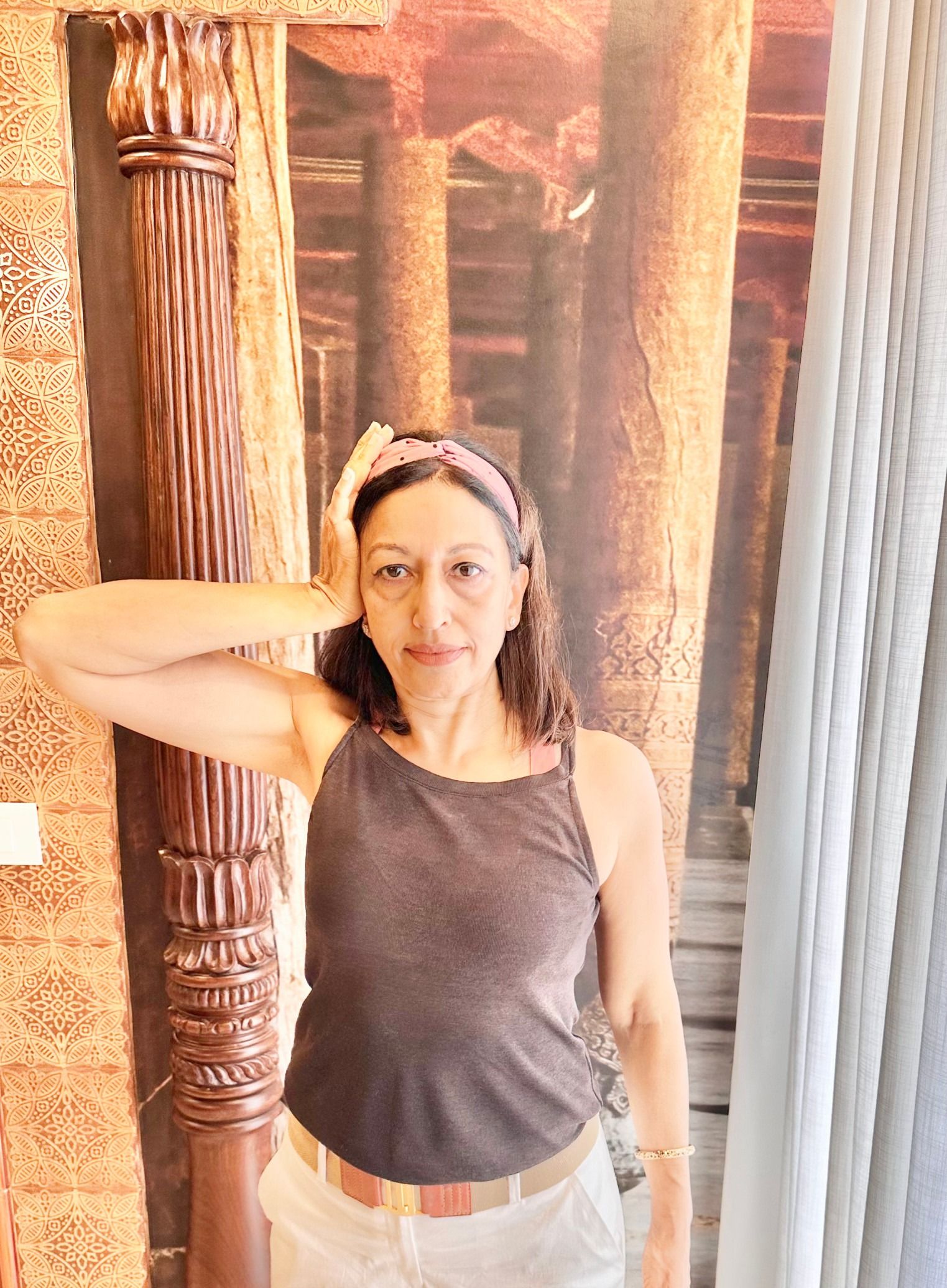Have you ever woken up with a stubborn pain in your neck and shoulders, thinking maybe you slept in an awkward position? You think it will ease out as the day goes on, but the ache and discomfort continue and are accompanied by stiffness and reduced range of motion, indicating full symptoms of Cervical Spondylosis.
This is such a widespread condition; in my class at any point of time I have always had a bunch of students who suffer from Cervical Osteoarthritis or Spondylosis.
The causes of Cervical Spondylosis are many. Usually it’s the wearing down of cartilage, intervertebral discs, ligaments and neck vertebrae/bones in the neck, which can cause discomfort and pain of varying intensity levels. Occasionally it could be caused by a whiplash injury in the neck, as might occur in an accident.
Sometimes if the nerves are badly impinged or compressed then one could have a very serious condition wherein weakness, tremors or numbness can be felt in the arms or legs or down the spine and back.
Besides consulting your medical doctor, it could prove very helpful to access online yoga classes and ask a trained teacher to demonstrate effective exercises and advise a full program of yoga cure for these weakened or injured neck muscles.
In my experience Cervical Spondylosis is mainly caused due to incorrect posture. We need to remember that our slender neck is holding up the weight of the heavy head, so the head should be balanced very correctly. If it falls forward even slightly, then the muscles at the back of the neck and the muscles leading down from the side of the neck to the shoulders get very strained causing pain and tension in this region.
As it happens, so many of our daily activities require us to look down; such as looking down into our phone or other such devices, looking down while cooking and chopping and so on. During these times we have to remind ourselves to keep the neck muscles engaged and drawn back, to counteract the falling forward of the heavy head and to prevent the head from slipping out of alignment.
A full regimen of yoga leads to teaching us about good posture, correct alignment of our skeletal structure and then the postures and vinyasas begin to strengthen our musculature, our connective tissues, our ligaments and tendons. The body is held together as a flexible but strong unit and weaknesses and misalignments are eradicated. This pertains to all parts of the body, including the neck muscles.
While you are suffering from this ailment please ensure that you refrain from any movements and exercises that require you to bend your head down. Try and remember “chin to chest’ should not happen, but dropping the head back or looking up is desired.
Remember, cervical spondylosis need not be a lifelong condition. Any muscle of the body can be strengthened and conditioned.
Here are Some Exercises Which Will Help You Achieve This
1 – Correct your posture against a wall and then ensure that your neck is always positioned like this, with the back of the head always in line with the back and not sliding forward.
2 – Pushing chin in with two fingers. (to train the head to remain pulled back)
3 – Turning neck muscles with the help of a yoga belt. (this twisting movement engages and strengthens the neck muscles on the sides). Double up your long yoga belt and hang it around your neck. Catch the left side of the belt with your right hand and the right side with your left hand. Then pick the belt held with the left hand to jaw level on the right jaw & pull on the belt to turn the head strongly to the left side bringing the chin in line with the left shoulder. Hold five seconds and release. Repeat five times then do it on the other side.
4 – Creating resistance in the muscles at the back and sides of the neck and thereby strengthening them with these hand aided exercises.
Push the head and the hands into each other, holding for five seconds. First clasping the hands behind the head, then clasped
hands at the forehead. Finally right hand on right side of the face, pushing hand and face into each other, then left hand on left side of the face.
5 – Look up at the sky/ceiling a few times daily, trying to drop the back of the head onto the back. This helps counteract any falling forward of the head that might be happening.
Curing any ailment requires the discipline to exercise very regularly. Put these simple exercises into your routine. It should take just ten minutes each sitting. Do them three times daily and watch your neck and shoulder area become free from tension and pain.
Need more details on how yoga can help ease the discomfort of Cervical Spondylosis? Register for my Online Yoga Classes from India at Yoga with Sapna now!
